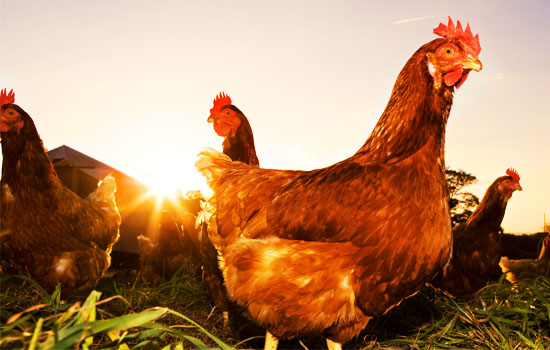The spring temperature rise is a good time to breed broilers, but it is precisely because of the temperature rise that a large number of microbial sources in the house have begun to multiply. Farmers should do a good job of preventing disease in the spring while breeding broiler chickens. From what aspects, the authors have integrated the experience shared by broiler cage manufacturers for reference by farmers.
1. Temperature: The optimum temperature can give the maximum benefit of the feed. The method of judging is as follows: First, the thermometer is hung at the same height as the chicken back for temperature measurement, and the first week of spring brooding is generally controlled at about 35 ° C, and then lowered by 2 ° C to 3 ° C per week. The second is to flexibly control the temperature according to the reaction of the flock. This is also a problem that should be paid attention to by the farmers. When the temperature is too low, the chickens scream and gather. When the temperature is too high, the chickens are scattered and have a wheezing. The temperature is suitable for the chickens. evenly distributed. It is also possible to use a combination of a thermometer and a sense to determine if the temperature is suitable.
2. Air in the house: The air in the house is fresh and can avoid the occurrence of respiratory diseases. Harmful gases or dust in the air can affect the health of the chicken and even cause death. The anaerobic bacteria in the chicken house decomposes the feces and the nitrogen-containing organic matter to produce ammonia gas. When the ammonia concentration in the chicken house is too high, people feel uncomfortable. When using the coal stove for heat preservation, a large amount of carbon monoxide, carbon dioxide, hydrogen sulfide, etc. are generated. Harmful gas, so it should be ventilated without lowering the normal room temperature, reducing the content of harmful gases and dust in the house.
3. Chicken battery cages feeding density: The density is too large, causing the growth of the chicken to be unbalanced, and the harmful gases in the air increase. Especially in the spring, the chicken is easy to infect E. coli, coccidia, etc., and the disease epidemic can be accelerated.
4. Stress: Excessive sound, vaccination, sudden changes in the weather, etc. are just a bad stimulus for chickens, often causing disease. Avoid unnecessary chicken catching and disturbing during feeding. For example, anti-stress drugs can be placed before and after vaccination for prevention; heat stress caused by rising temperatures is handled.
5. Strengthen sanitation and disinfection: In the prevention and treatment of chicken diseases, disinfection should always be placed in an important position. It is necessary to grasp the three links, that is, the disinfection work before the chicks enter the house, during the whole feeding period and after the chickens are released.
6. Regular drug prevention: Viral diseases are prevented by vaccination, and most bacterial diseases rely on the regular delivery of drugs to achieve prevention. The bacterial diseases and parasitic diseases popular in spring mainly include colibacillosis, salmonellosis, chronic respiratory diseases, coccidiosis, etc., and most of these diseases have a great relationship with age and environmental changes, which requires different The situation to develop different medication prevention procedures.
